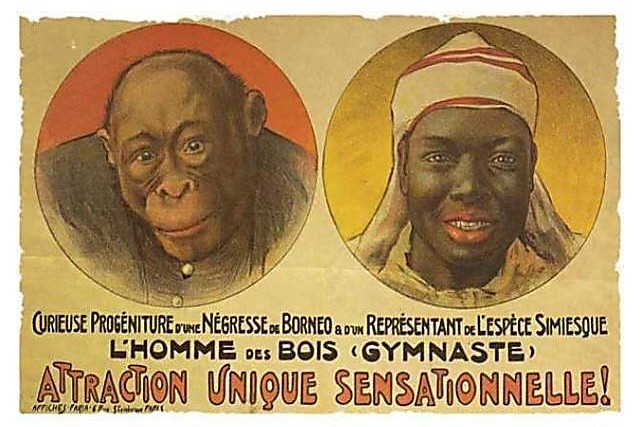
This is a poster used during the era of Human Zoos. Note a "Negro" associated with an image of a monkey.
Racial discrimination remains deeply rooted in European and American culture. The enslavement of Afrikan people, the ethnic cleansing of Native Americans and colonial imperialism are the seeds that combine to create hatred, prejudice, and injustice against an indigenous population. An occasion of the human history of bigotry and prejudice is the forgotten, hidden history of Ethnological Expositions better known as Human Zoos, which featured Afrikans and other indigenous people who were forcibly removed from their homelands, locked inside Human Zoos, and put on display for public viewing as if they were animals.
In 1874, Carl Hagenbeck, a German animal trader and business operator of several European zoos, was one of the leaders in this profession, whose name still graces the Hamburg zoo. He conceptualized the idea of introducing zoos that were not only to be filled with animals, but also with people. In 1876 Carl Hagenbeck sent an associate to the Sudan to bring back Nubians as European collections to be displayed before the public. This unusual exhibition soon became a huge success in other places like Paris, London, and Berlin. By the late 1800's, Europe was filled with a number of these Human Zoos in Paris, Germany, Belgium, Spain, London, Italy and Russia. Not to be left out, New York also organized these popular barbaric shows.
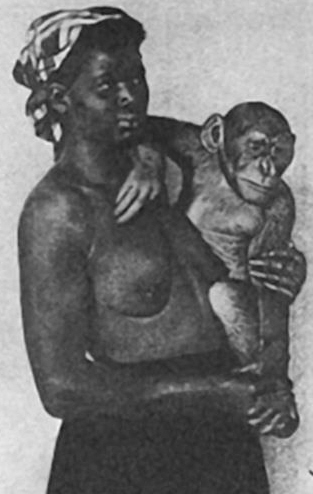
During the early 20th century, Germany held what was called The Peoples Show. Afrikans were brought in as zoo exhibits for viewing and inspection by the audience, with an average of 300,000 visitors coming to see every show in each city. The World’s Fair was visited by 28 million people during 1889 who lined up to get a look at the 400 indigenous people that were the main attraction. The 1900 World’s Fair followed suit, as did the Colonial Exhibitions in Marseilles: 1906 and 1922, and in Paris: 1907 and 1931, which displayed naked and half-naked humans in cages. In just six months Paris attracted 34 million people to its exhibition.
More than 35,000 indigenous people including children, departed from their native homelands from all around the world to take part in these exotic exhibitions at the height of imperialist Europe. Entire families were taken from the colonies and clothed in traditional costumes before being packed into replicas of their native villages to perform for the audiences. Europeans gawked at the bare breasted Afrikan women while being entertained by re-enactments of primitive life in the colonies. So called anthropologists and researchers took the opportunity to go and observe these villages of Afrikan tribes, so they could compile what they believed to be physical evidence that supported their theories on racial superiority.
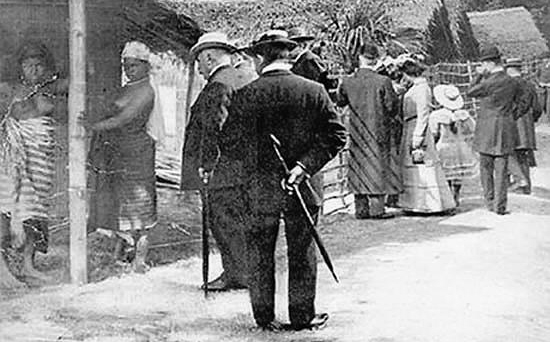
A Negro village exhibition
These colonial exhibits which showcased Black people were designed to draw attention to cultural differences between Europeans and Afrikans, who were ranked on the same level as primates, and also to highlight their primitive and savage way of life. These exhibits became well known in the western world, as millions of curious sightseers in America and across Europe rushed to get a glimpse of these Human Zoos to see Black and Asian people paraded as exhibits in cages. The Europeans and Americans stared in awe while heckling, taunting, ridiculing, and poking fun at these unfortunate people.
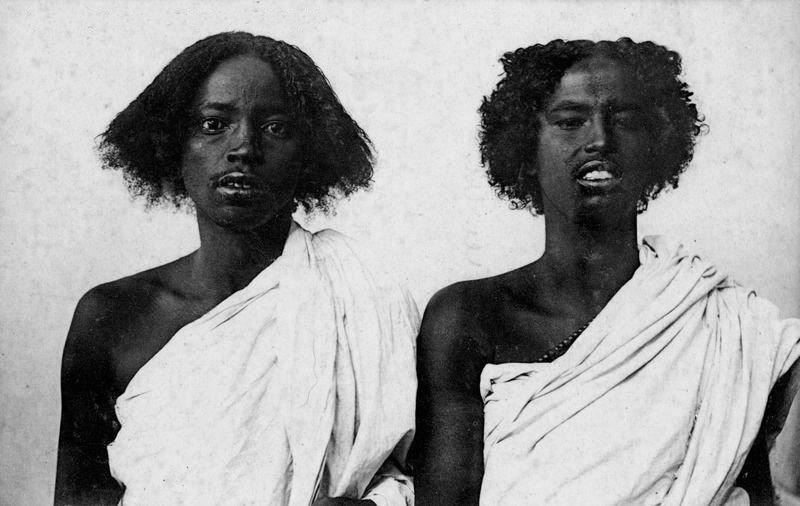
One of Carl Hagenbeck's human zoo side shows was attended by half a million people in Paris. By the 1930s there were about 400 Human Zoos in Germany. These zoos in Germany had a strong racist overtone that was derived from the concepts of Social Darwinism. Black people were often displayed with monkeys and chimpanzees to support and justify a common origin.
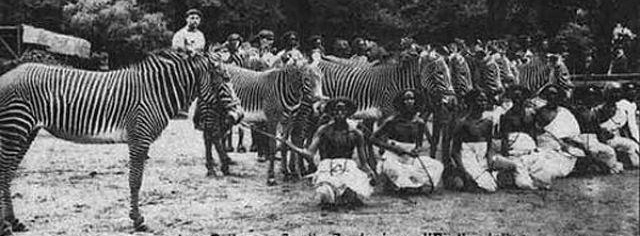
This is one of France’s many Negro Villages where Black people were exhibited in a dehumanizing manner and compared to animals. This Carl Hagenbeck's display called Galla Truppe consisted of a group of individuals from the Oromo tribe who were kidnapped from Ethiopia.
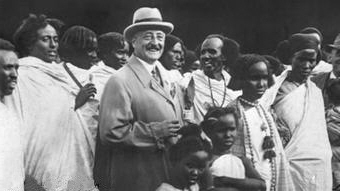
Carl Hagenbeck surrounded by Somalians he put in the Hamburg zoo, Germany, 1927.
In his memoirs, Carl Hagenbeck praised himself by stating that, "it was my privilege to be the first in the civilized world to present these shows of different races". For 400 years, beginning with the first voyages of discovery, Europeans acquired a taste for seeing exotic human specimens displayed for their benefit and pleasure. What began as a thirst for knowledge on the part of the populace soon turned into a false science by the mid-1800s, as researchers set out to prove their theory of the contrasting divisions in the human race.
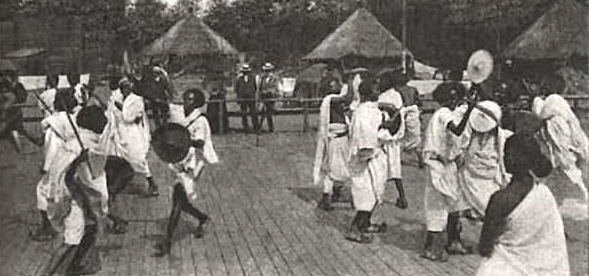
A Somalian village exhibition at the Luna Park in St. Petersburg, Russia.
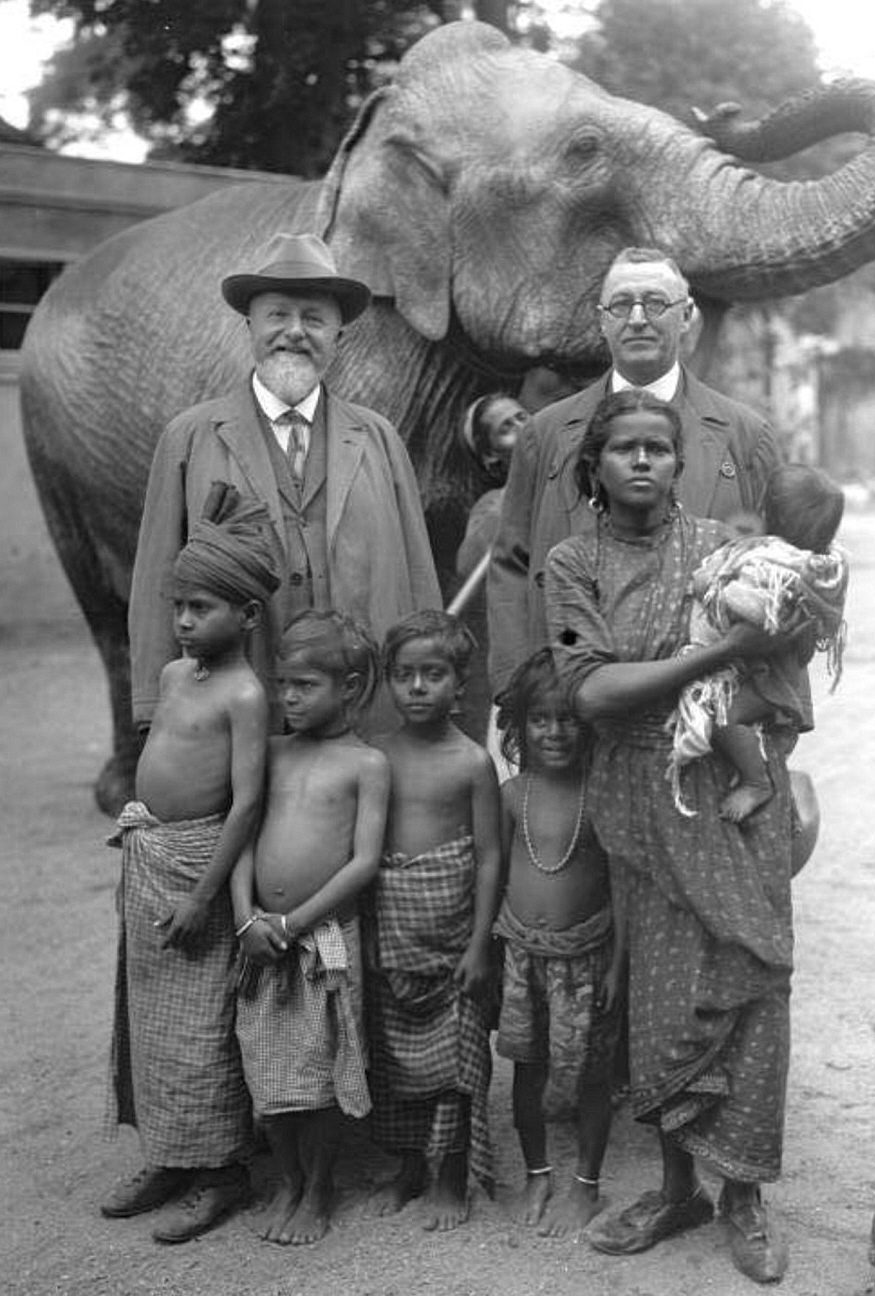
Professor Lutz Heck (left), a German zoologist posing with an Afrikan family
he brought to the Berlin Zoo Germany in 1931.
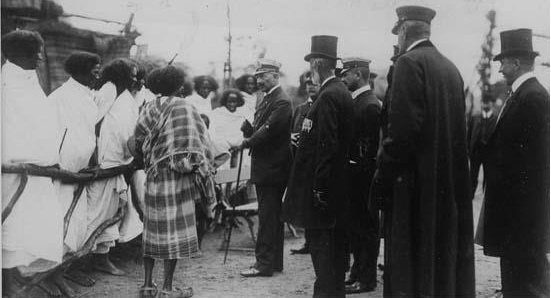
Wilhelm II, Germany's Emperor examining some Ethiopians
positioned behind a wooden fence in the Hamburg zoo Germany, 1909.
This Mother and Child exhibit was among the most popular shows at the Negro Village in Germany, where Darwinism - (the theory of biological evolution of the species by natural selection as taught by Charles Darwin) - was generally accepted. Otto von Bismarck even visited this exhibit.
Up until 2005, there were still Afrikan tribesmen wearing grass skirts at a Western zoo in Augsburg, Germany.
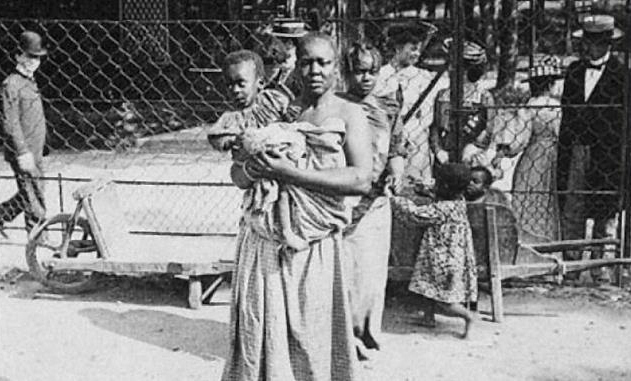
Colonial exhibits became popular in the western world around the latter part of 1800, which was the period just before the arrival of the cinema, so these shows gave Europeans the opportunity to experience the Afrikan culture which they had only heard about. Massive crowds from Belgium, France and many other European countries flocked to get a glimpse of these Black people who were locked away in cages at their local zoos.
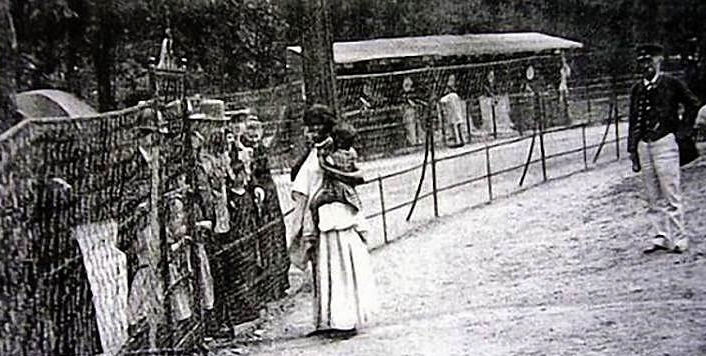
This local event was part of the World’s Fair in France.
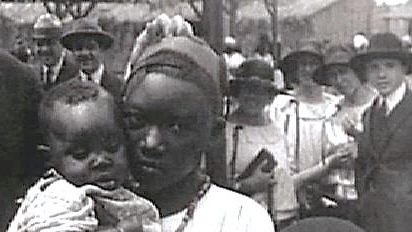
A mother and child in a Negro village. White man touches her woolly hair.
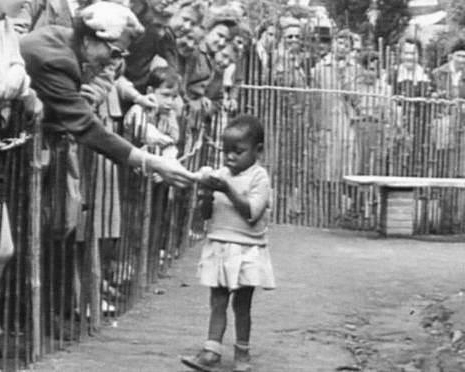
A little girl named Jackie at the Brussels World Fair, Belgium, 1958.
Children and even babies were also put on display inside these Human Zoos. This is a little Black girl named Jackie who was kept in a zoo as a monkey to attract tourists while dressed in western clothing in a Congolese Village at the 1958 World’s Fair in Brussels, Belgium. The little girl is given a banana by an outstretched hand of a white spectator at the hosted People’s Show. The patrons and the girl were kept separated by wooden fences, as they watched in amazement.
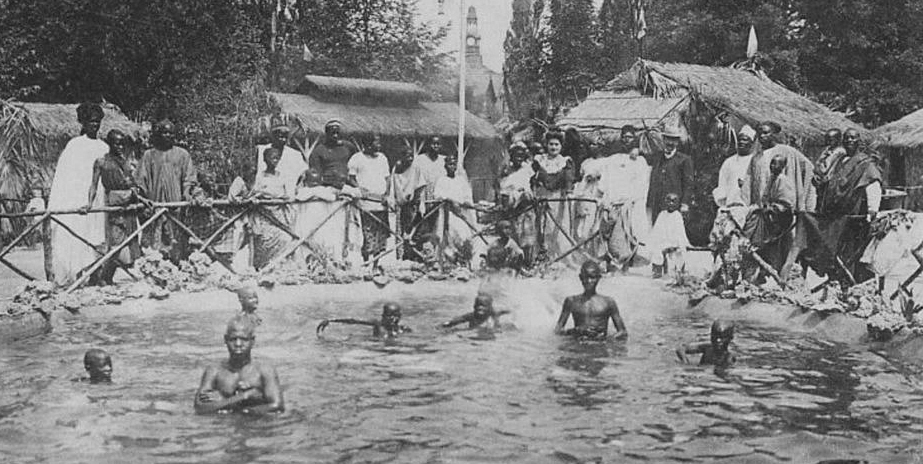
A Senegalese Village with a replica pond at the Universal Exposition of Liège, Belgium, 1905.
The World's Fair in Brussels, Belgium in 1958 also featured this simulation Senegalese village. These inhumane exhibitions held across the Western world were set up to embellish and distort cultural contrasts between Europeans and Black people, whom they had classified as being primitive.
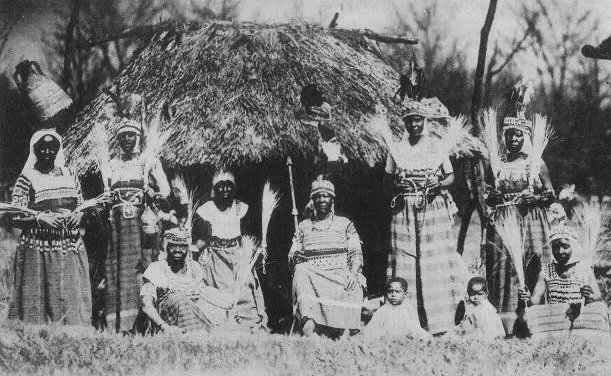
This is another Carl Hagenbeck`s human zoo featuring a Sudanese troupe.
The Nubian exhibit was so highly successful in Europe, that it toured Paris, London, and Berlin as well.
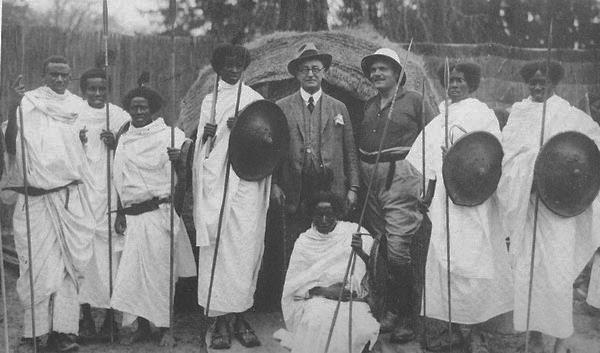
Black people from Somalia in the zoo of Basel, Switzerland, 1930.
The only excuse for this European mind-set could have been the fact that up to the early 20th century, many of them did not know the difference between a Black person and an ape.
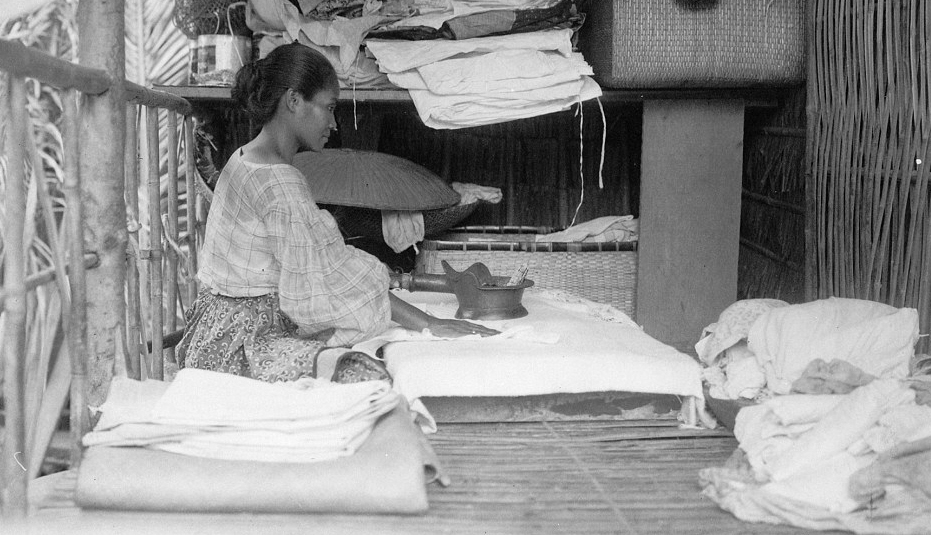
This Javanese woman sits in a replica wooden hut with textiles,
at an exhibit in the World's Columbian Exposition in Chicago, Illinois.
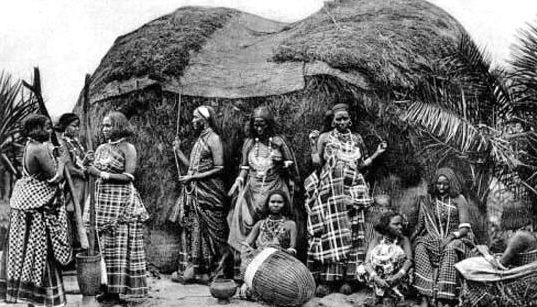
Another Negro exhibit
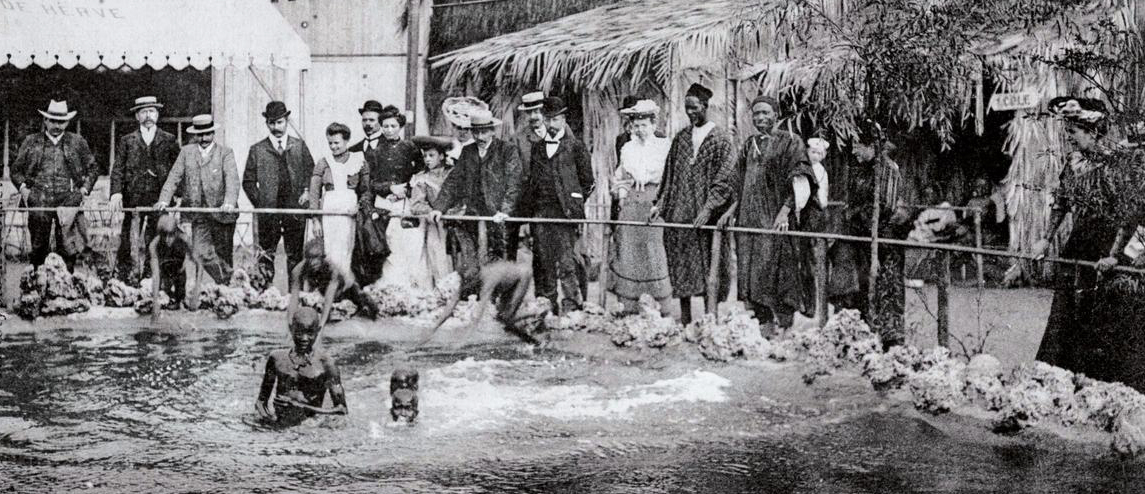
Afrikans displayed in an artificially recreated habitat in a Belgium zoo, 1905.
Afrikans were generally displayed with spears and advertised as savage hunters who had barely evolved to a level just above the wild animals, but in reality most Afrikans at the time were herders and farmers. One of these shows was called the Gorilla Negroes.
This perverted industry also affected many indigenous Australians in the late 19th and early 20th centuries. They were taken from northern Australia and placed in Human Zoos with animals to be exhibited around North America and Europe.
Indigenous Australians were living on the continent for more than 65,000 years prior to the arrival of the British colonial settlers in 1788, where an estimated one and a half million aboriginals existed, but by 1901 there were less than 100,000 left.
These Aboriginal groups were promoted as Boomerang Throwing Savages and as cannibals even though they were not. The Aborigines were classified as
wild animals and non-human beings, in addition to being labelled as beastly, hideous to humanity, scum of the earth, and pests. They were declared to be the missing link between man and ape, which was pleasing to those audiences in search of exoticism and the thrill of the unknown.
Indigenous people from specific locations around the world were displayed in reconstructed ethnic villages in Europe at World Zoos, Exhibitions, Freak Shows, and also circuses like the P.T. Barnum's - Greatest Show on Earth.
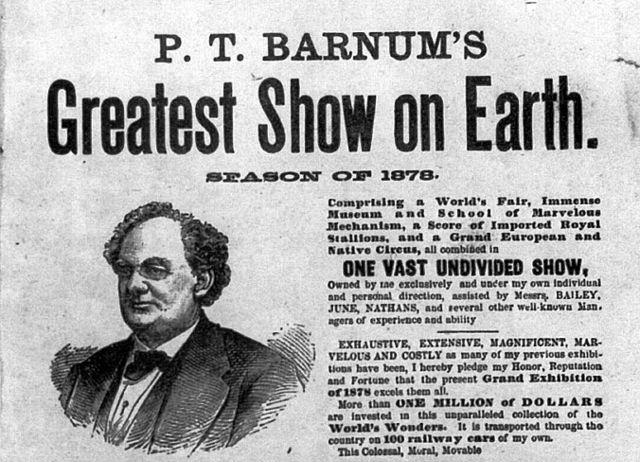
In August 1882, the circus stage manager P. T. Barnum requested representatives from all the uncivilized races in existence. R. A. Cunningham, a showman, responded by rounding up and shipping two groups of Australian Aborigines from Ingham and Palm Island, Australia to the United States where they were displayed as cannibals in fairgrounds, circuses, museums, and Human Zoos throughout America and Europe. They were examined and measured by so called anthropologists, ethnologists and physicians as their research objects.
They became living science exhibits and freak show commodities for the entertainment of white audiences throughout the United States and Europe. One of the main attractions to these freak shows, circuses, and world exhibitions was the fact that many of the people came from remote, exotic places.
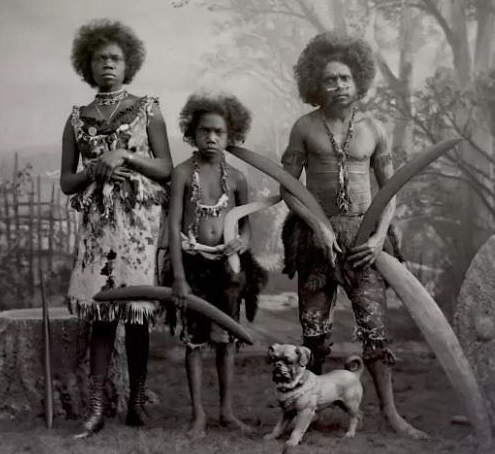
During this time, violence against the Indigenous Australians was rampant, and entire tribes were being forcibly removed from their traditional lands and taken to church-run communities to become indentured slaves.
Promises of escaping the violence and poverty of Queensland, Australia is what lured away many of these aborigines to join these Human Zoos, only to find out later that they were being treated worse than animals in Europe and the U.S.A.
An estimated 1.2 billion people paid to see natives on display in these Colonial Exhibitions, Circuses, Human Zoos, Freak Shows, and simulated natural villages.
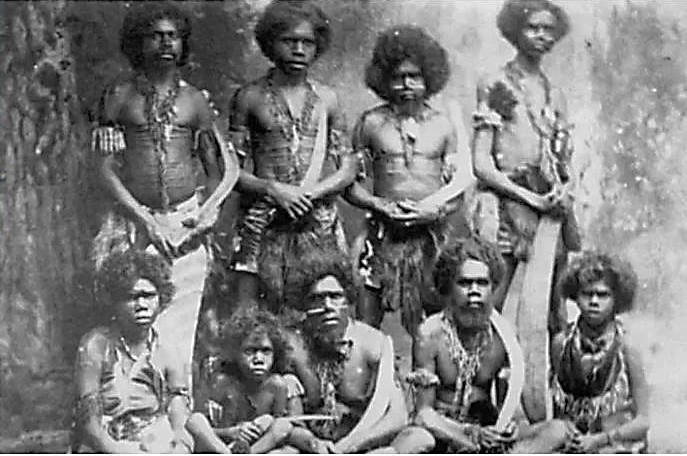
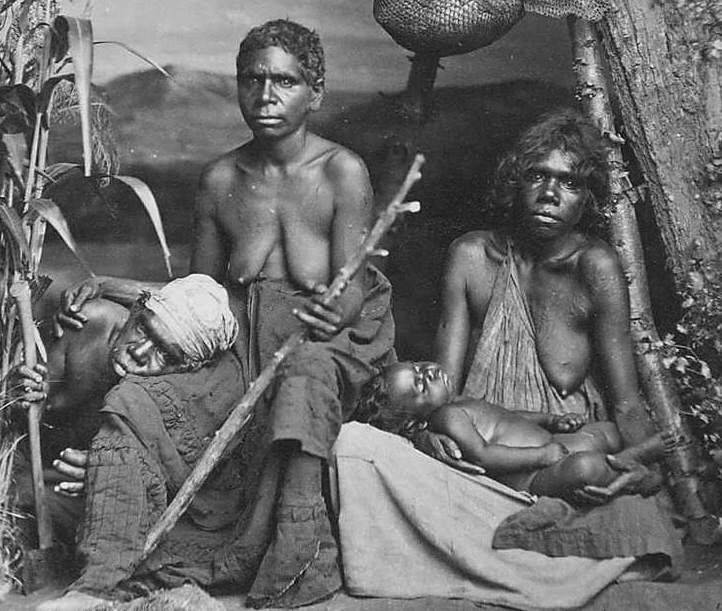
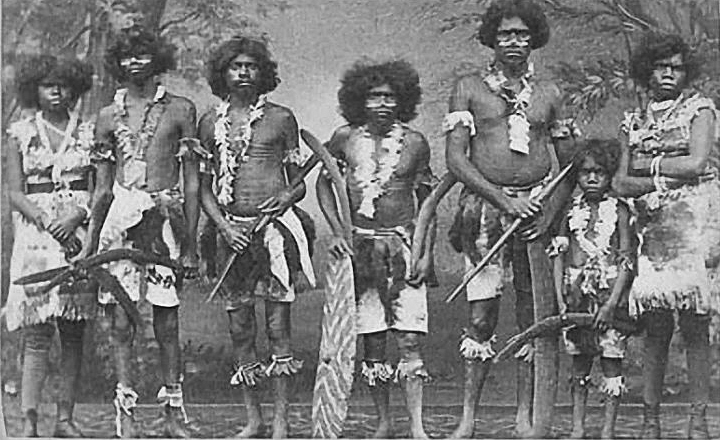
An exhibit of Australian aborigines at the Crystal Palace in London, 1884.
Up until August 2005, a London Zoo was still displaying human beings wearing fig leaves, and as late as 2007 the Adelaide Zoo was still housing people in an age-old ape cage during the day.
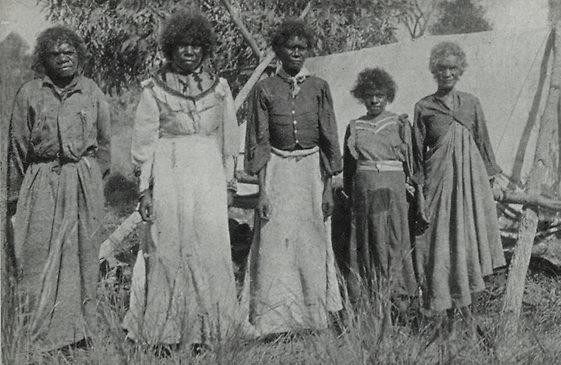
Australian Aborigines displayed in a pseudo-ethnographic format.
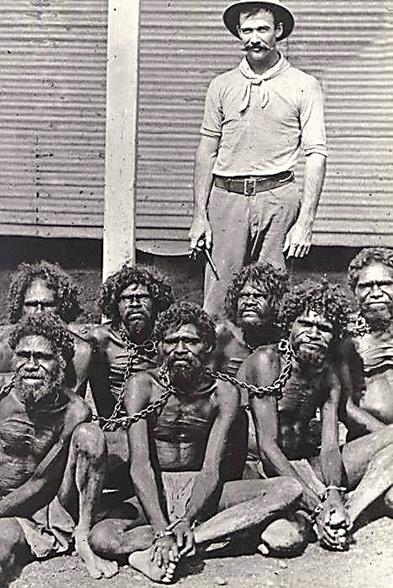
A European man posing with his captured Aboriginals.
This unidentified Afrikan man was cruelly displayed as an exhibit at the 1904 St. Louis World's Fair in Missouri, and was referred to as the missing link. Europe likewise exhibited indigenous people in similarly caged Human Zoos throughout France, Norway, Belgium, Germany, Spain, Russia, and Italy.
Norway also operated a Human Zoo that included natives from Senegal who lived in a reconstructed Congo Village. Well over half the Norwegian population visited this exhibition in Oslo, (the capital city of Norway), to get a view of the Afrikans bedecked in traditional clothing and living in palm-roof cabins, while going about their daily chores of cooking, eating and producing handicraft. Oslo’s original Human Zoo or Kongolandsbyen was central to Norway’s world fair in 1914. The king of Norway officiated at the opening of the exhibition.
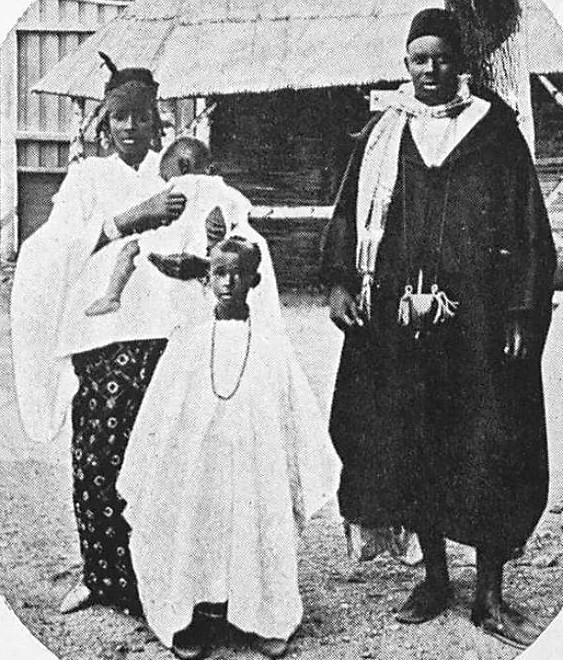
The Kongolandsbyen zoo in Oslo, Norway, 1914.
Norway’s 1914 Human Zoo is not a universally known historical fact within the country or outside, but for five months, 80 people of Senegalese origin lived inside The Congo Village in Oslo, surrounded by indigenous Afrikan artefacts.
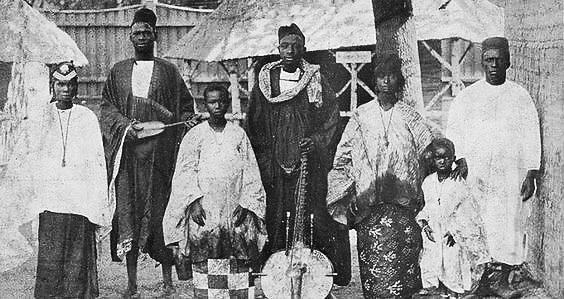
Afrikans exhibited like animals in a Human Zoo in Oslo's Frogneparken, Norway, 1914.
There were several Human Zoos or Colonial Exhibitions in Belgium, Germany, France, London, the U.S.A., and other western countries that were displaying Afrikans and other non-white people. These activities were mainly responsible for influencing the European public of the justification to colonize Afrikan territories, because the idea of parading Afrikans as primitive; uncivilized; and animals, made it more easily acceptable to see them in that light and to set out to conquer them. It was also a source of entertainment for the European of the day to see how backward Afrikans were. In fact, one Norwegian magazine called Urd, came to the conclusion that “It’s wonderful that we are white”.
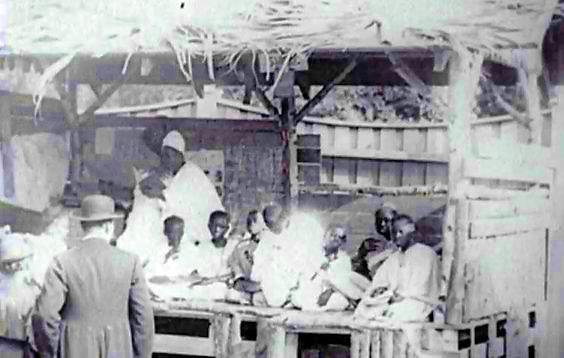
Afrikans exhibited like animals in Norway's Human Zoo.
The creation of Human Zoos will therefore explain how millions of Caucasians were manipulated into accepting the myth of the inequality of the races that morphed into racial discrimination. Afrikan bodies, whether alive or dead, were displayed with the belief that their race was questionable, based on the false theory that they were academically and ethically disconnected from all other human groups. These views had their origins in flawed European beliefs about Afrikans.
For example, their first maps of Afrika were embellished with made-up images of Afrikans with tails, or as headless, savage creatures with eyes and mouths on their chests. Also, by setting out to establish continuity between the animal kingdom in Afrika and its human population, slavery became justified and legal authority was thereby given to the Europeans to colonize Afrika as a means of demonstrating European superiority over all other races.
In the late 1800s, France had an agricultural site called Jardin d’Agronomie Tropicale which was originally a test garden for exotic products from the vast empire of the country, which included the Congo, Sudan, Tunisia, Madagascar, Indo-china, and Morocco.
In an impressive but twisted display of power, France, in an attempt to promote its colonizing dominance, built six different villages in the Jardin d’Agronomie Tropicale in 1907 to represent all the sectors of the French colonial empire. The garden’s tour became part of the Paris Colonial Exposition which hosted simulations of indigenous villages complete with Afrikan people living in replicated huts that were supposed to mimic what life was like in their countries. This type of entertainment was introduced as a means of promoting the splendour of French colonial power. Well over a million visitors came to the exhibitions which might have seemed harmless at first, were it not for the fact that real-life humans were being displayed inside these Human Zoos.
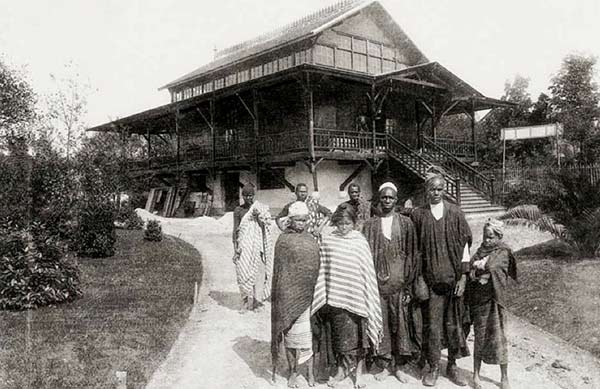
This is replica of a Congolese factory built in Marseille, France, 1906.
Each village was provided with inhabitants of colonial subjects that were contracted as performers, but they soon realized they had become the exhibits themselves. These groups were given costumes to perform non-stop for the audiences. However, many of the performers died because of foreign diseases, the horrible living conditions, and the freezing conditions.
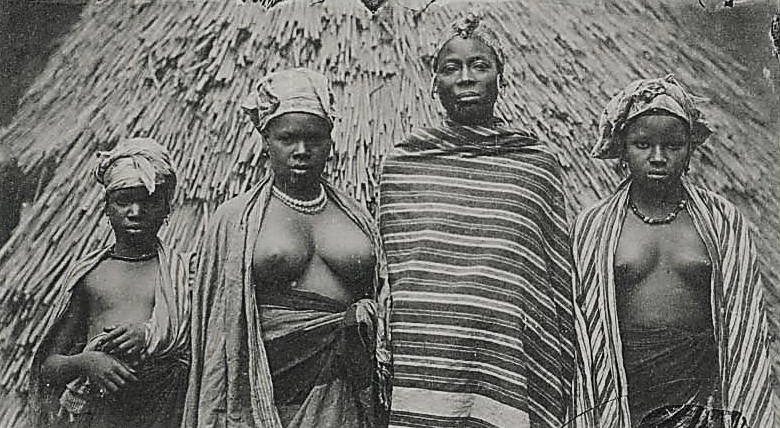
Exposition Coloniale Internationale, Paris, France, 1907.
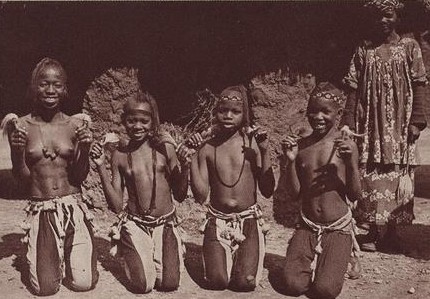
Exposition Coloniale Internationale, Paris, France, 1931.
Audiences could now observe entire villages with real-life Afrikans acting out war dances and religious rites in front of their white colonial masters.
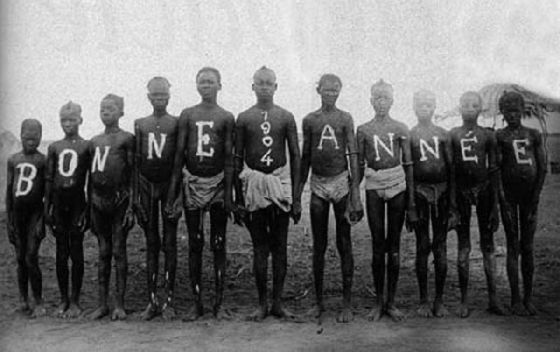
Natives from the Congo being exhibited and ridiculed in a human zoo.
Director of the Jardin d’acclimatation, Geoffroy de Saint-Hilaire, decided in 1877 to organize two ethnological spectacles that displayed Nubians and Inuit natives. In that year, the visitors at the Jardin d’acclimatation increased to one million.
In both the 1878 and 1889 Parisian World Fairs when Paris was celebrating 100 years of liberty, equality and fraternity, it did so by putting on an Exposition Universelle or what was known as a Negro Village (village nègre), that attracted an overwhelming 28 million visitors who focused their eyes on the 400 stripped down and partially naked Afrikans and Aboriginals that were thrown into cages as the main attraction, and paraded like animals inside these Human Zoos in front of the large captivated crowds.
The Aborigines, Nubians, Egyptians, and Native Americans in Paris were dressed in fanciful costumes and exhibited in villages that stretched the length of the Invalide esplanade of today.
Other cities such as London, Chicago, Barcelona and Brussels also held similar exhibitions, including Australia, which also had its own variations of Human Zoos.
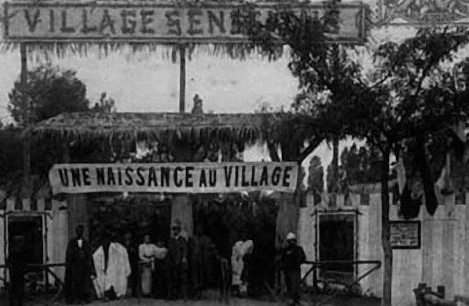
Negro Villages exhibited in France.
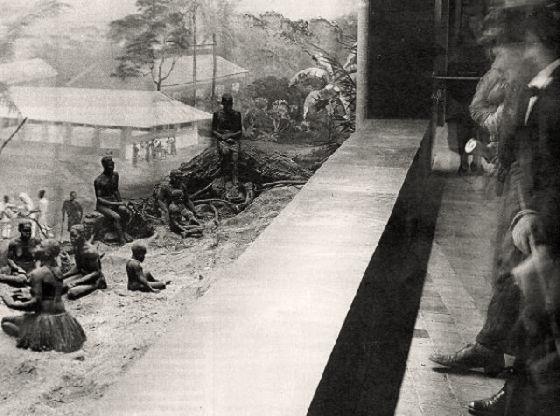
Another human zoo on display in France.
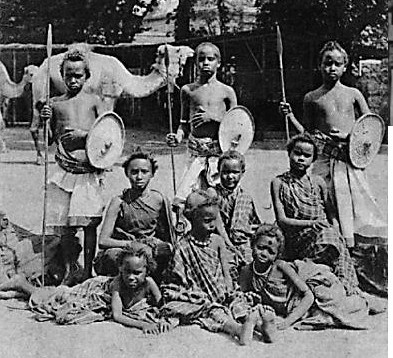
Exposition Coloniale in the Jardin d’Agronomie Tropicale.
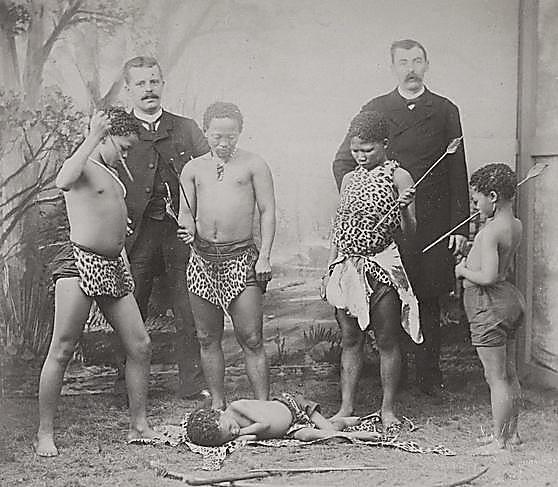
An 1886 show featuring Pygmies (Bushmen) at the Folies Bergère in Paris, France.
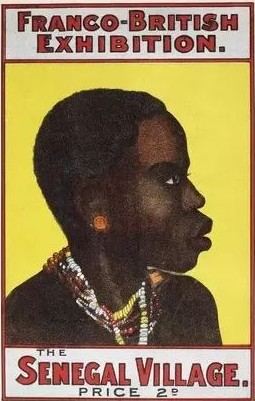 Men and women from the French colonies were brought to Europe and rented out to zoological and tropical gardens where they were paraded alongside exotic animals.
Men and women from the French colonies were brought to Europe and rented out to zoological and tropical gardens where they were paraded alongside exotic animals.
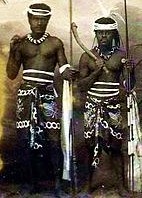
Kanak warriors and their families were shipped from French New Caledonia. Afrikan families were also recruited in Senegal, Niger, and Guinea Benin to live in replicas of their villages. They were given flashy traditional costumes, and ordered to dance and play music for the visitors.
During this dark period of world history, intellectuals were considering where to draw the line between humans and animals. They arranged humans ranked in order from the lightest to the darkest skin tones, and believing that Afrikans were ape-like, they were not sure whether to include apes as Afrikans, or Afrikans as apes.
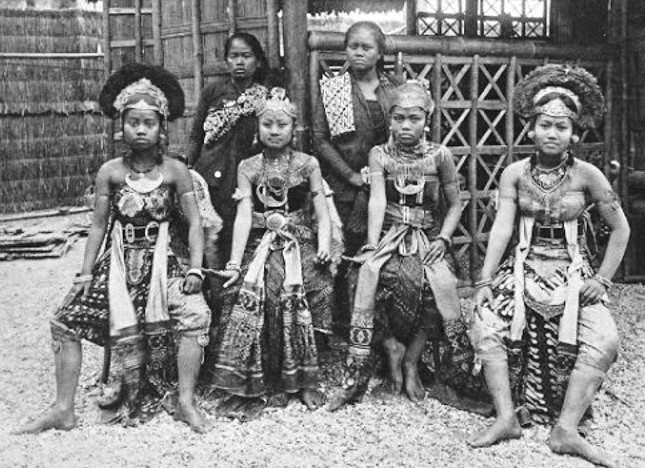
This particular exhibit was so successful at the 1931 Paris World Fair that it attracted around 34 million people in that year alone, and even as late as April 1994, an Ivory Coast village was kept as part of an Afrikan safari in Port-Saint-Père (Planète Sauvage), near Nantes, France.
THE ST. LOUIS WORLD’S FAIR: OTA BENGA
Despite the fact that during the late 1800s and mid1900s many Human Zoos located in Europe were very well received, they were not only an invention of the old world, because North America also had its equivalent share of Human Zoos. Consistent with other world fairs at the time, the St. Louis World’s Fair of 1904 was an international exhibition in Missouri that became an entertaining spectacle.
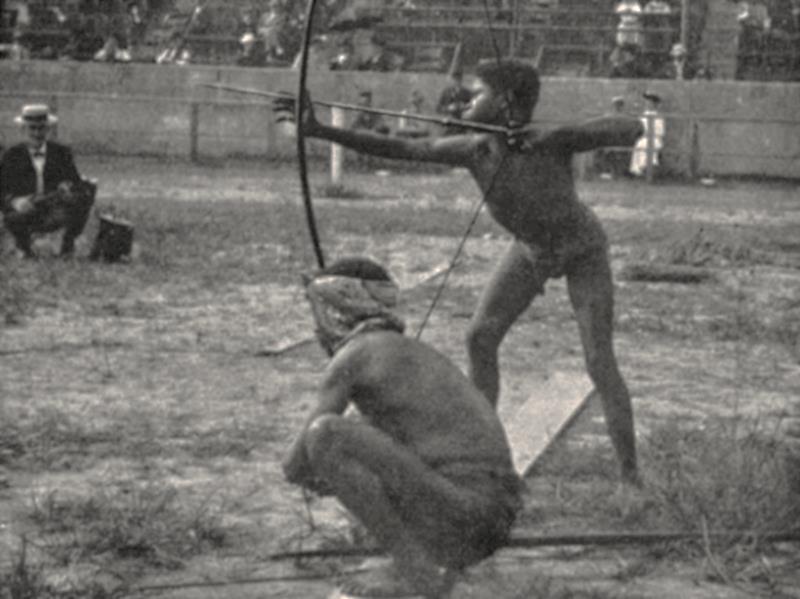
This was an event organized by white people in St. Louis called the Savage Olympics Exhibition, where Black people participated in an archery competition.
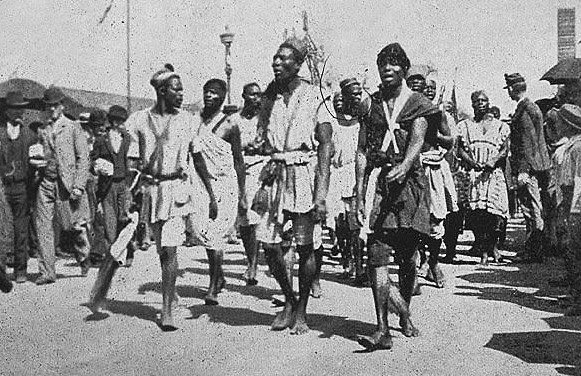
A Dahomey (Benin) Village on display.
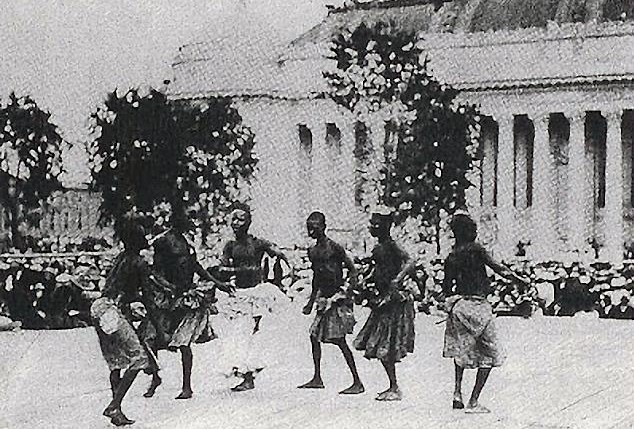
Pygmies were often forced to dance at the numerous world exhibitions to entertain guests who visited the Human Zoos in Germany and England. In the United States there were also Human Zoos which displayed indigenous Pygmies from Afrika, whom many modern Darwinians considered to be of the Stone Age level of human evolution.
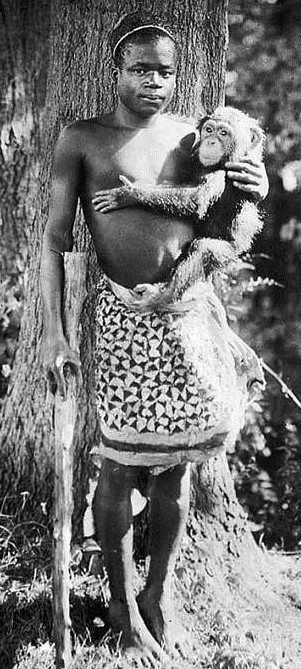
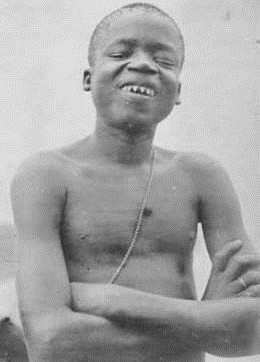
One of the most historically gripping records about the social effects of Darwinism is the story of Ota Benga, an Mbuti pygmy 4 feet 11 inches tall, who was put on display in an American zoo as a specimen of an inferior evolutionary race.
Ota Benga was 23 years old when he was discovered in the Afrikan Congo and brought to the St. Louis World’s Fair in the U.S.A by an American missionary in 1904. This was an international exhibition in Missouri that displayed a large group of Black people, but which also included a separate presentation that featured Ota Benga. This entertaining event was part of the Primate Production.
After that exhibition closed, Ota Benga was taken to New York in 1906 to become part of an exhibition at the Bronx Zoo in New York City by a trainee anthropologist named Madison Grant who was head of the New York Zoological Society. Ota Benga was tricked into believing that he was being hired to take care of the zoo’s elephants, but unknown to him; he was being publicly advertised as a savage.
After being thrown into a cage with primates as his companions, Ota Benga was constantly forced to carry around chimpanzees and other apes, a performance that was endorsed by amateur anthropologist Madison Grant, secretary of the New York Zoological Society and future celebrated eugenicist.
Ota Benga was often showcased with an orangutan named Dohong. At times he would wrestle with orangutans, but he also did other tricks with apes to entertain the large crowds who came to see this specimen of an inferior human in the zoo. When Ota Benga was not with the animals, he would use his bow and arrow to shoot at various targets or make funny faces for the audience. Being advertised as a savage pygmy and having made his first public appearance on the previous afternoon, Ota Benga quickly became an overnight sensation and the highlight of his village zoo, where he was paraded inside a monkey house that carried a poster on the outside which read, “Exhibited each afternoon during September”.
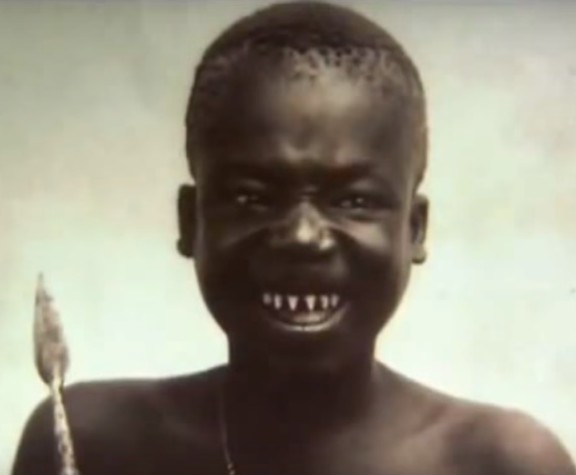
Ota Benga’s teeth were filed down into sharp points as was culturally acceptable and considered attractive in his tribe, but zookeepers used this to their advantage and began sprinkling bones on the floor of his cage to make him look even more vicious, barbaric and savage. The audience came in droves; often 500 sightseers at a time and thousands a day at the peak of the exhibit. The New York Times even advertised the exhibition with the caption: “Bushman Shares a Cage with Bronx Park Apes”, and in the body of the article Ota Benga was described as, “a Bushman, one of a race that scientists do not rate high in the human scale". William Hornaday, another eugenicist and zoo director promoted Ota Benga as “The Missing Link” of evolution. As a result, large crowds kept flocking in droves to view the display, with over 40,000 coming to see him daily, where he was often subjected to a barrage of insults and cigarette burns.

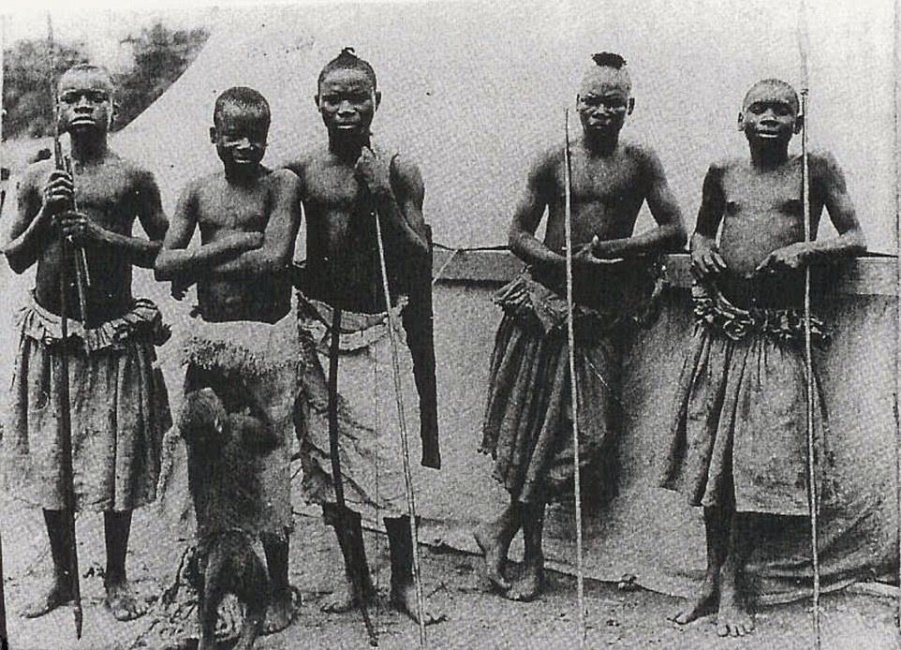
The horrific treatment of Ota Benga, second from left, the Congolese pigmy who was exhibited in New York's Bronx Zoo in 1906, eventually sparked some serious outrage from the Christian community, which eventually led to him being freed.
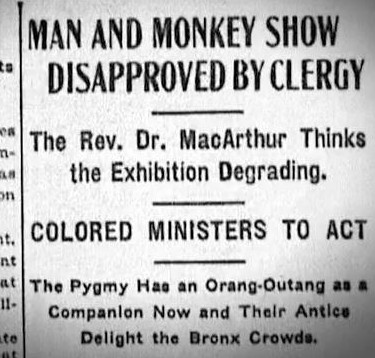
After leaving the zoo, Ota Benga returned to Afrika only to find that his tribe had been decimated, therefore he felt that he no longer belonged there and decided to return to the U.S.A., but he was not able to assimilate into the American way of life either, so in 1916 out of frustration, he tragically took his own life by shooting himself.
It is estimated that from 1870 up until the 1930s, more than 1.5 billion people visited the various exhibits around the world that featured indigenous people.
Ssehura / Sarah Baartman: Racism Against an Ethnic Group
The openness of putting an aboriginal on display actually got started when explorers like Christopher Columbus and Amerigo Vespucci lured native people into going to Europe from their homelands, where they ended up being exhibited as trophies in order to confirm the discovery of new exotic lands. However, what started off as a curious admiration soon turned into an era of racial superiority that is still prevalent today, and the Invention of the Savage.
A 19 year-old Khoisan girl who was orphaned in the 1700’s in South Afrika known as Sarah “Saartjie” Baartman, was symbolic of the dark period that gave rise to the popularity of Human Zoos. In 1810 Sarah Baartman was lured into taking part in an exhibition when William Dunlop, a ship's doctor, convinced her that she could earn a fortune and find fame in Europe, so she accompanied him with that belief in mind, but instead she was forced to become a travelling freak-show attraction, dressed in tight-fitting clothes that violated all the cultural norms of decency at that time. Sarah Baartman was displayed in London during the early 19th century as a novelty and something exotic.
A few years later Sarah Baartman came to Paris where she was displayed at social functions. Racial anthropologists, doctors and fake scientists repeatedly poked and prodded her naked body under the prying eyes of the general public, while concocting their false theories.
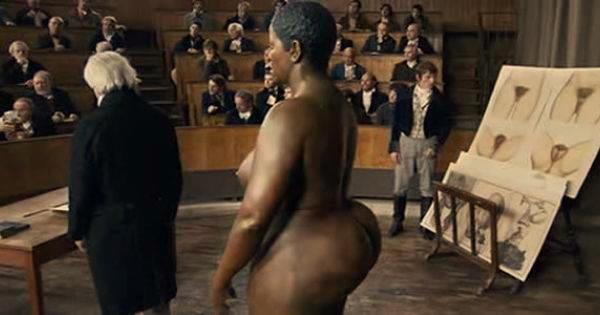
Sarah Baartman became known as the Hottentots Venus because of her elongated labia coupled with a genetic trait called steatopygia which causes the buttocks to protrude and stand out. White people were captivated at seeing the genitalia of the Black woman.
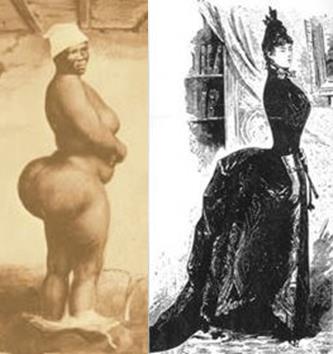
For many years, working class Londoners crowded the cage to shout vulgarities at Sarah Baartman and her protruding buttocks, but secretly her contours were greatly admired and desired by the countrymen. This caused European women to start imitating that shape by designing and wearing a large pad around their waist called the bustle, to mimic Sarah’s protruding and curvy posterior.
Sarah Baartman soon found herself being exhibited nude in cages as a sideshow attraction, and at one such event she drew the attention of Dr. George Cuvier, Napoleon's surgeon general. Eventually she turned to prostitution to support herself after settling in Europe for about five years.
In December 1815 at age 25, Sarah Baartman died in poverty as a result of the many cruel and inhumane experiments that were done to her body in the name of science. So fascinated were the Europeans with the curvaceous body of Sarah Baartman, that Dr. George Cuvier wasted little time in making a plaster model of her brain and preserved her buttocks, sexual organs and skeleton for display at the Museum of Mankind in Paris, where they remained until 1974.
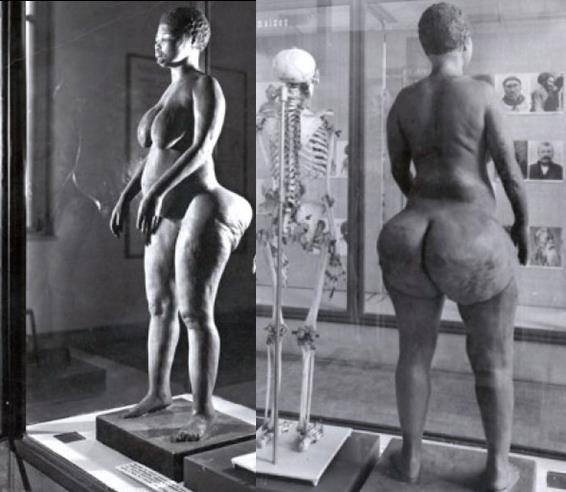
In 2002, President Nelson Mandela formally requested the return of her remains, so Sarah Baartman finally returned home after leaving her homeland in South Afrika two hundred years earlier, to be respectfully buried there.
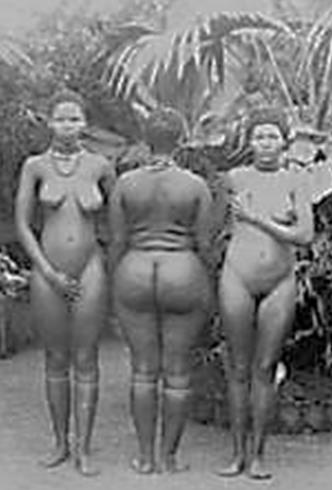
Just like Sarah Baartman who was exhibited in the nude like a wild beast in Europe which became a freak-show attraction because of her enlarged genitalia and pronounced buttocks, there were many other women who were also born with the same type of genetic condition called steatopygia that causes the posterior part of the anatomy to become well-rounded and project outwards.
These women were also recruited to work in the Paris Human Zoo where hundreds of white people would come in droves to gawk at their bulging curves.
Steatopygia is a genetic trait that results in a large degree of fat accumulation in and around the buttocks, stretching to the outside and front of the legs.
This is a hereditary peculiarity in some Khoisan women which is considered to be a sign of beauty, but it is also common among the pygmy tribes of Central Afrika, the Negroes of the Andaman Islands, and in several parts of Afrika and the Caribbean.
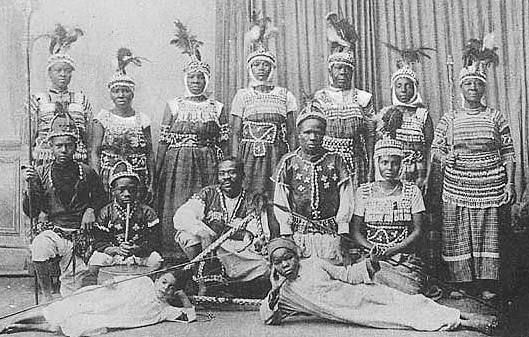
One of Carl Hagenbeck’s German show pieces
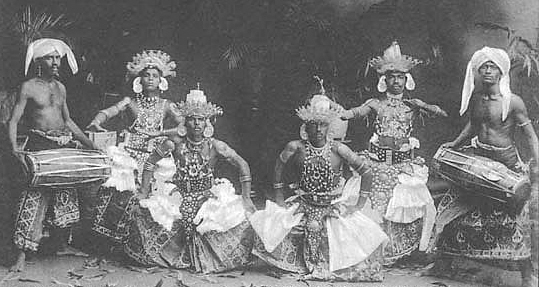
Carl Hagenbeck’s German display
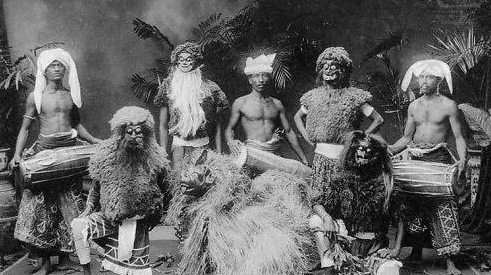
A group of captives from Sri Lanka called Ceylon in a German zoo.
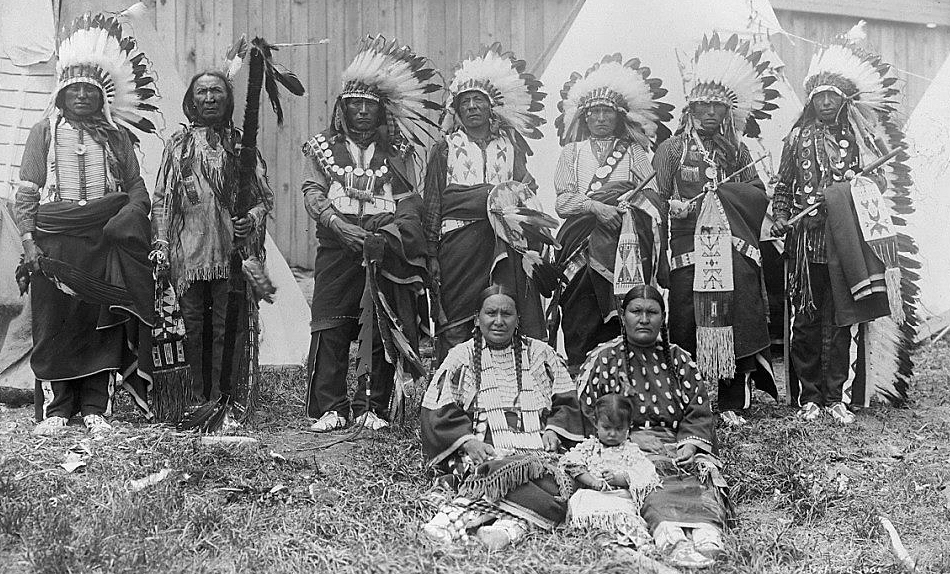
Chief Yellow Hair and his council standing in front of replicas of teepees
at a human zoo in the 1904 World's Fair at St Louis, Missouri.
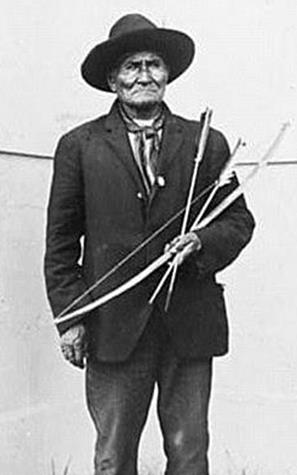 Europeans began to inform their countrymen that the indigenous people they discovered overseas were savages, so they had to go and civilize them. When it was time to exhibit the caged Afrikans, they were transformed to look like savage beasts and exotic freaks.
To do this, Europeans set up sceneries with huts and trees while packing the Afrikans into Human Zoos to make visitors believe that Black people in Afrika were indeed savages who lived in trees and mud huts.
The Afrikans were forced to dance, imitate wild animals, and climb trees to entertain the crowds, besides being placed in the same cages with animals and at times stripped naked to ridicule and humiliate them.
Europeans began to inform their countrymen that the indigenous people they discovered overseas were savages, so they had to go and civilize them. When it was time to exhibit the caged Afrikans, they were transformed to look like savage beasts and exotic freaks.
To do this, Europeans set up sceneries with huts and trees while packing the Afrikans into Human Zoos to make visitors believe that Black people in Afrika were indeed savages who lived in trees and mud huts.
The Afrikans were forced to dance, imitate wild animals, and climb trees to entertain the crowds, besides being placed in the same cages with animals and at times stripped naked to ridicule and humiliate them.
This is Geronimo, the great Apache Chief at the 1904 St. Louis World Fair. Geronimo and other Native American chiefs were also displayed during the events.
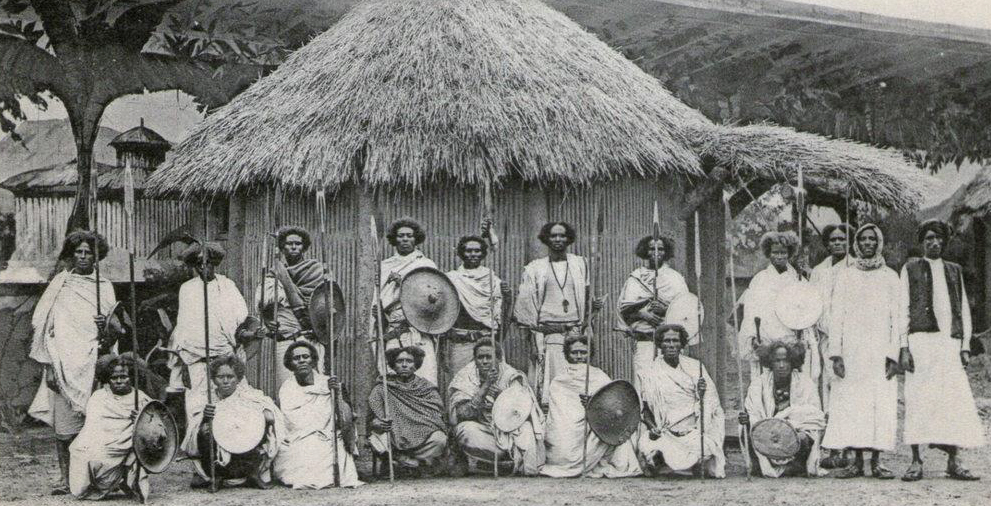
A Somalian Village at Marine Gardens, Portobello - Scotland, 1910.
One of the more distinctive attractions was this Somali village which was populated by 70 natives who were shipped over from Afrika. The Somali natives occupied a small area of mud huts where they performed mock fights with spears accompanied by fierce cries and the beating of tom-toms. Their main purpose was to provide exotic amusement to visitors at the park.
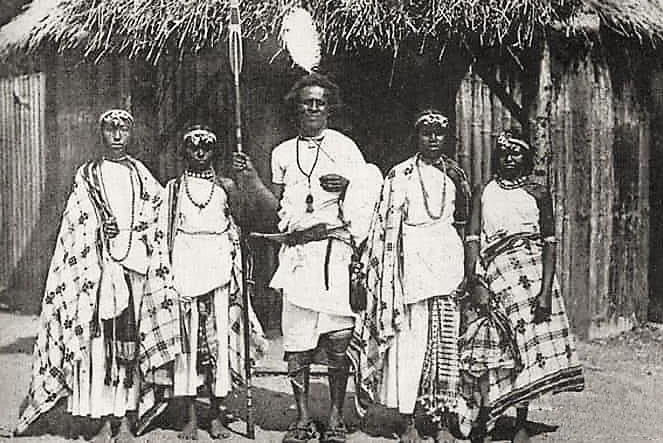
A Somali Village at Marine Gardens, Portobello - Scotland, 1910.
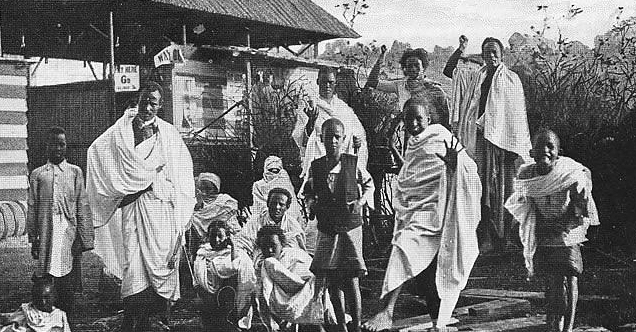
A Somali Village at the Great Bradford Exhibition, UK in 1904.
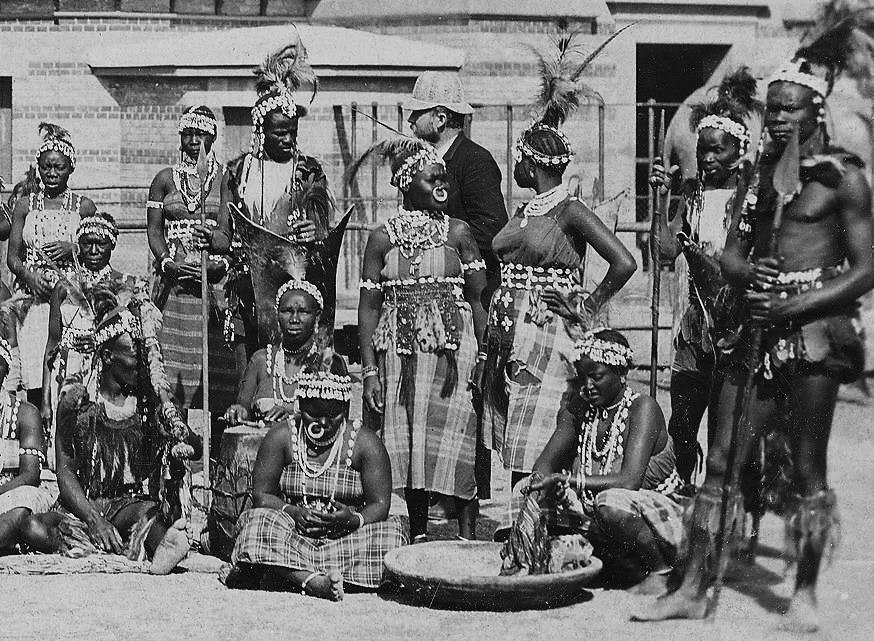
A group of men and women “not as obnoxiously ugly as the Negro race produces.”
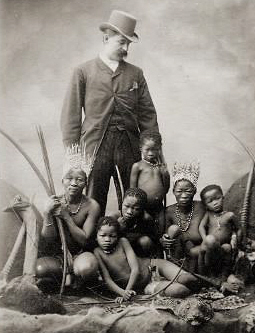
Bill Hunt, a Canadian explorer at one of his exhibits
displaying South African people in London, 1884.
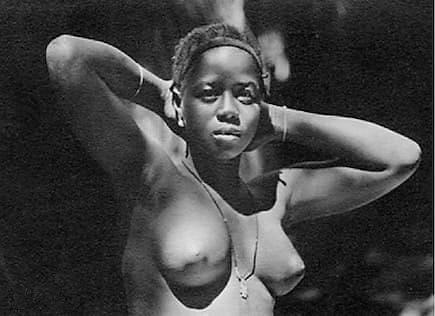
A Guinean native at the First Colonial Portuguese Exhibition in Oporto, Portugal 1934.
This colonial exposition organized in Oporto during 1934, included many villages that were occupied by Afrikans and children, but the Afrikan women were the main attraction for the thousands of visitors who flocked to this event to gawk at the bare-breasted native women. The Catholic Church took no offense to this as they viewed the displayed women simply as Black Savages.
An Ashanti in the Berlin Zoo, Germany, 1958. A Black girl on display, Brussels, Belgium, 1958.
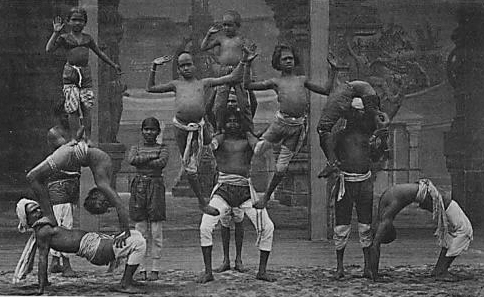
This is part of a show called “Les Indes,” where captives from India are being paraded.
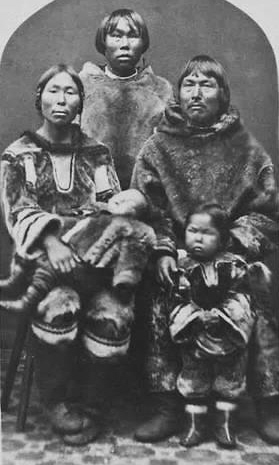
This is a family of Labradorean Eskimos exhibited in the Berlin Zoo, 1880.
These natives from the Inuit tribe arrived from Labrador to Europe around 1880, after being deceived by promises of fortune and adventure, only to realize that they were now trapped inside a Human Zoo and exhibited like animals before the public.
It is common historical knowledge that the Afrikans were civilized long before the Caucasian race appeared on the world scene, but Eurocentric historians have always tried to make it look as though the Afrikans and other non-white people of the human race were inferior to the white race. The historical achievements of the great Black civilizations like Egypt and Nubia were carefully hidden from view until recently when Black historians like Cheikh Anta Diop, Ivan Van Sertima, Rashidi Runoko, Molefi Kete Asante, and Amiri Baraka, for example, began exposing to the world what had been kept secret for over 300 years.
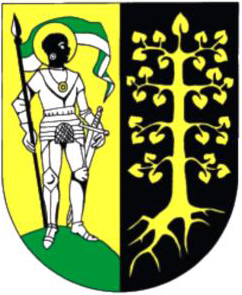
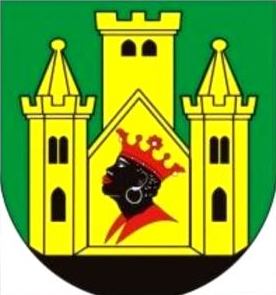 Afrikans contributed greatly in the field of literature, science and technology, astrology, music and various forms of art aeons ago, but despite this, the white race, which is still in its infancy, began viewing Black people as primitive beings with a mental capacity that is similar to that of apes and monkeys.
As soon as the Europeans started discovering previously unknown countries, they wasted little time in capturing and promoting the indigenous people as savages and cannibals, then tried to blot out from memory, for example, the fact that in Gough’s Cave in England, discovered remains of human bones and skulls from roughly 15,000 years ago, clearly showed that cannibalism was a normal practice amongst the people who were dwelling in those caves at that time. Archaeologists were also able to track evidence as far back as 7,000 years, which proved that mass cannibalism also existed in Germany, where children and unborn babies formed part of the local menu.
Afrikans contributed greatly in the field of literature, science and technology, astrology, music and various forms of art aeons ago, but despite this, the white race, which is still in its infancy, began viewing Black people as primitive beings with a mental capacity that is similar to that of apes and monkeys.
As soon as the Europeans started discovering previously unknown countries, they wasted little time in capturing and promoting the indigenous people as savages and cannibals, then tried to blot out from memory, for example, the fact that in Gough’s Cave in England, discovered remains of human bones and skulls from roughly 15,000 years ago, clearly showed that cannibalism was a normal practice amongst the people who were dwelling in those caves at that time. Archaeologists were also able to track evidence as far back as 7,000 years, which proved that mass cannibalism also existed in Germany, where children and unborn babies formed part of the local menu.
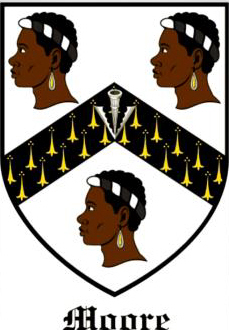 On the other hand, Black people and those of the so called inferior races did not view Europeans as primitive with inferior brains. However, when Europeans of earlier days got the opportunity to become enlightened at the feet of the Afrikan Moors, it did not take long for them to start seeing Black people as inferior to them. As a result of their distorted views, they proceeded to create and introduce Human Zoos in order to belittle and demean other fellow human beings, and then attempted to keep their immoral acts hidden from the general public.
On the other hand, Black people and those of the so called inferior races did not view Europeans as primitive with inferior brains. However, when Europeans of earlier days got the opportunity to become enlightened at the feet of the Afrikan Moors, it did not take long for them to start seeing Black people as inferior to them. As a result of their distorted views, they proceeded to create and introduce Human Zoos in order to belittle and demean other fellow human beings, and then attempted to keep their immoral acts hidden from the general public.
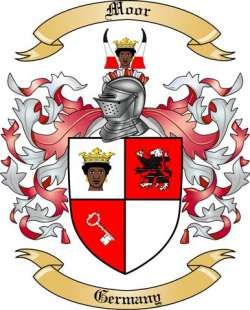
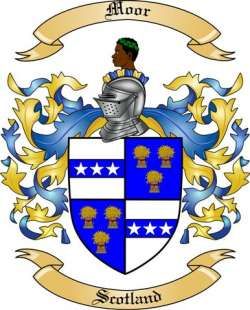 The European population became racist towards Black people because they awaken memories that their previous rulers and ancestors were Black. Black people clearly were not only located in Afrika alone, because they migrated and populated every corner of the globe.
The European population became racist towards Black people because they awaken memories that their previous rulers and ancestors were Black. Black people clearly were not only located in Afrika alone, because they migrated and populated every corner of the globe.
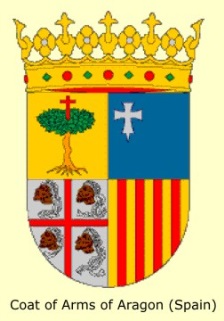 The fear of the European towards Afrikans today traces its origins back to the Moorish conquest of the Iberian Peninsula around 700 A.D., in addition to other territories of Western Europe prior to and after that time period.
The fear of the European towards Afrikans today traces its origins back to the Moorish conquest of the Iberian Peninsula around 700 A.D., in addition to other territories of Western Europe prior to and after that time period.
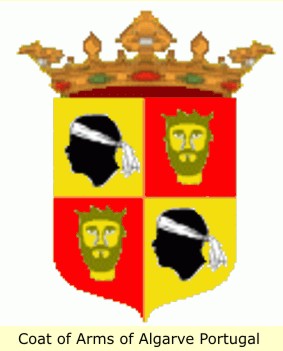 Belgium, like Portugal, was to a great extent a Black Moorish country at one time, and basically all the other small countries within the area including France, Holland, England, Germany, and so on were also strongholds of the once all-powerful Black Moorish kingdom with their kings and nobles, princes and princesses.
Belgium, like Portugal, was to a great extent a Black Moorish country at one time, and basically all the other small countries within the area including France, Holland, England, Germany, and so on were also strongholds of the once all-powerful Black Moorish kingdom with their kings and nobles, princes and princesses.
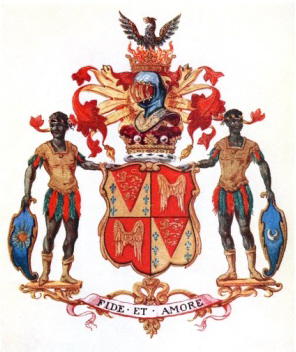
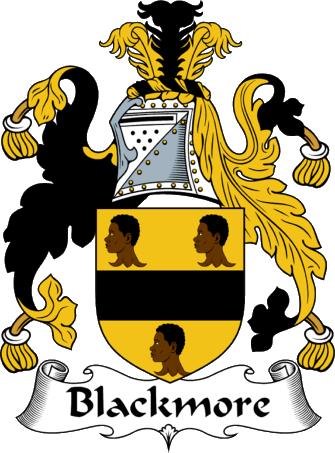 Europe began concealing the remnants of its Afrikan ruler ship about 250 years ago, knowing that the Afrikans were the original source of all European royalty still remaining there, and that includes England and France.
In fact, all European families whether made up of royalty or small farmers, have a family crest as shown on these pages, which is almost always a Black Moor.
Europe began concealing the remnants of its Afrikan ruler ship about 250 years ago, knowing that the Afrikans were the original source of all European royalty still remaining there, and that includes England and France.
In fact, all European families whether made up of royalty or small farmers, have a family crest as shown on these pages, which is almost always a Black Moor.
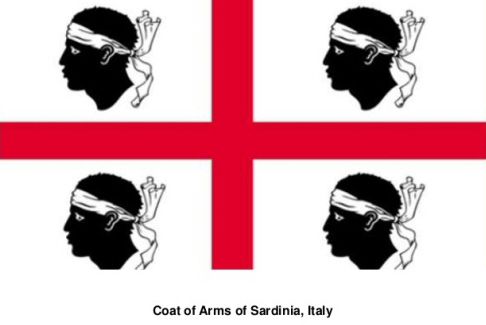

© John Moore - Barbados, W.I. (2018)©. All rights reserved.